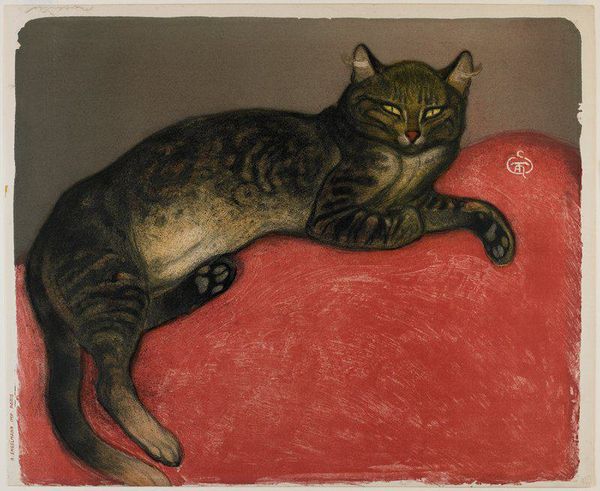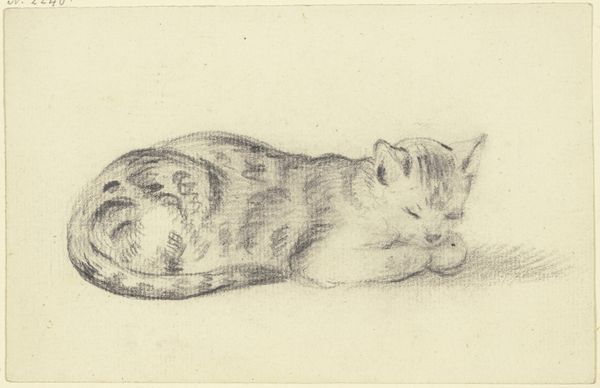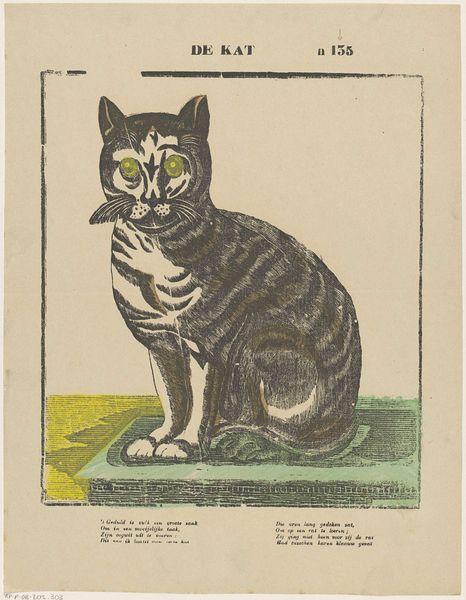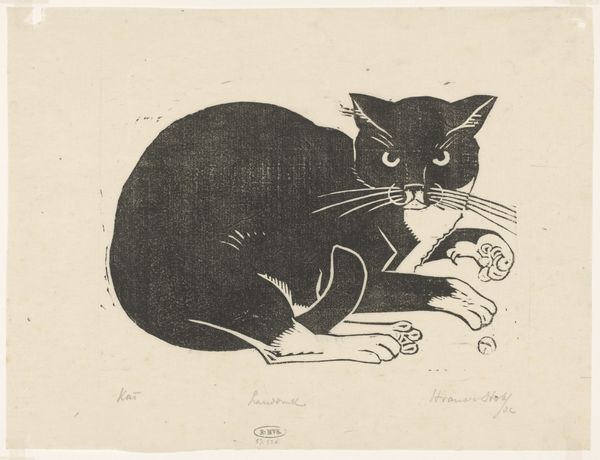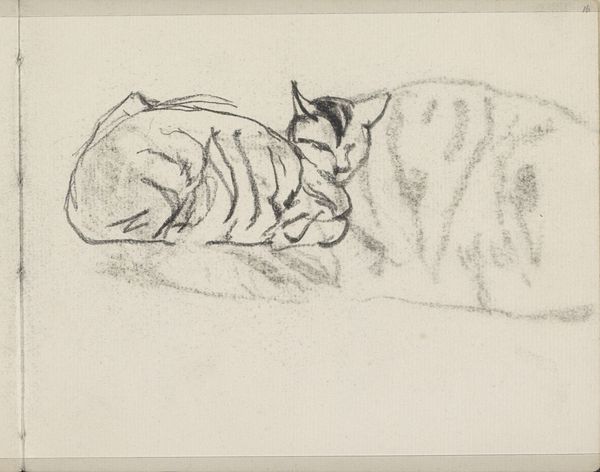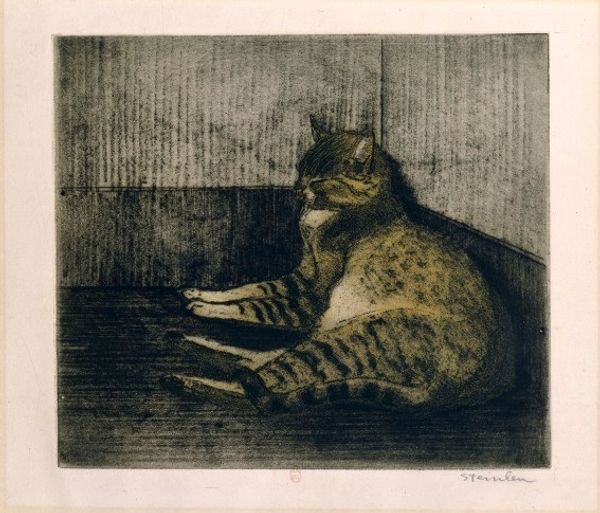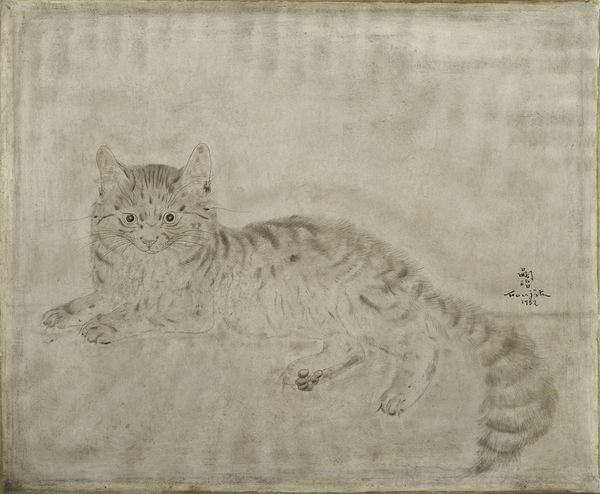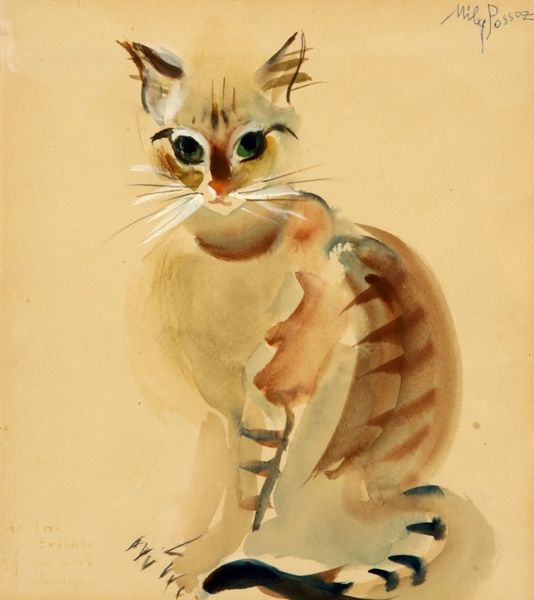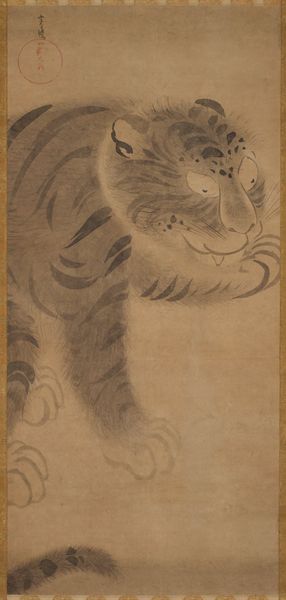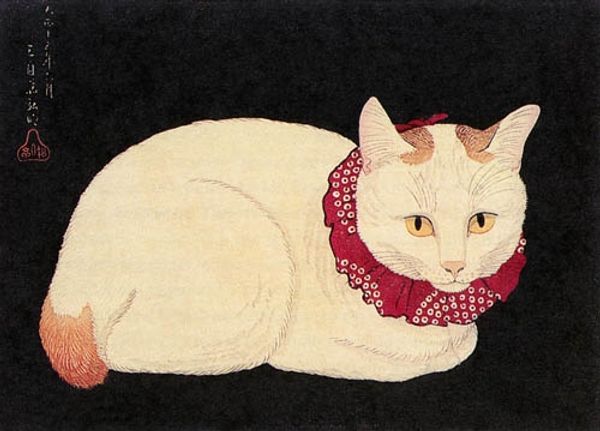
drawing, pastel
#
portrait
#
drawing
#
art-nouveau
#
figuration
#
form
#
line
#
symbolism
#
pastel
Copyright: Public Domain: Artvee
Théophile Alexandre Steinlen created this drawing of a cat on a cushion, sometime around the turn of the twentieth century. It's a deceptively simple image, but it speaks volumes about the artist’s relationship with the society of his time. Steinlen’s sympathies invariably lay with the marginalized, and here he presents the domestic cat, a creature living on the fringes of human society, as a kind of emblem of the dispossessed. Like Steinlen’s more overtly political subjects, this cat regards the world with a gaze of wary intelligence. In nineteenth-century France, cats occupied an ambivalent position, somewhere between beloved pets and unwanted strays. Cats were often associated with the bohemian subculture of Montmartre, where Steinlen lived and worked. By elevating this animal to the status of art, Steinlen was implicitly challenging the academic hierarchies that still dominated the art world of his day. To understand Steinlen's work fully, we need to consider the artistic and political debates of his time, exploring journals and exhibition reviews to understand its place in the cultural landscape.
Comments
No comments
Be the first to comment and join the conversation on the ultimate creative platform.
